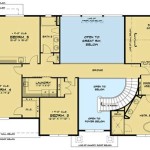A Whole House Lighting Plan is a comprehensive and well-thought-out approach to designing and implementing a lighting system that meets the specific needs of an entire residence. It considers various factors such as the size, layout, and architectural features of the home, as well as the occupants’ lifestyle and preferences. This plan serves as a valuable tool for ensuring an optimal illumination experience throughout the property, enhancing both functionality and aesthetics.
A Whole House Lighting Plan is particularly beneficial during the construction or renovation phase of a home. It allows homeowners to envision and plan for their desired lighting scheme, ensuring that electrical wiring and fixtures are installed in a way that aligns with their vision. This holistic approach helps avoid costly reworks and ensures that the lighting system seamlessly integrates with the home’s overall design.
In the following sections, we will delve deeper into the key considerations, components, and benefits of a Whole House Lighting Plan, providing insights into how it can elevate the ambiance and functionality of any residential space.
A Whole House Lighting Plan encompasses various important considerations, including:
- Natural light
- Task lighting
- Accent lighting
- Ambiance
- Control systems
- Energy efficiency
- Scalability
- Exterior lighting
- Safety and security
- Budget
Addressing these factors ensures a lighting plan that meets the unique needs and preferences of the homeowners.
Natural light
Natural light plays a crucial role in a Whole House Lighting Plan. It offers several benefits, including:
- Reduced energy consumption: Natural light can significantly reduce the need for artificial lighting during the day, leading to energy savings.
- Improved health and well-being: Exposure to natural light has been linked to improved mood, reduced stress, and better sleep quality.
- Enhanced visual comfort: Natural light provides a more diffused and comfortable light source compared to artificial light, reducing eye strain.
- Architectural enhancement: Natural light can highlight architectural features and create a more inviting and spacious atmosphere within the home.
When designing a Whole House Lighting Plan, it is important to maximize the use of natural light by considering the following strategies:
- Window placement: Position windows to allow ample natural light to enter the home, particularly in areas where it is most needed, such as living rooms, kitchens, and bedrooms.
- Skylights: Install skylights in areas with limited window access to bring in natural light from above.
- Light-colored interiors: Use light-colored paint and finishes to reflect and enhance natural light.
- Avoid obstructions: Remove or minimize obstacles, such as heavy curtains or furniture, that may block natural light.
By incorporating these strategies, homeowners can harness the power of natural light to create a healthier, more energy-efficient, and visually appealing living environment.
Task lighting
Task lighting is crucial for illuminating specific areas where detailed work or activities take place, such as reading, cooking, or working at a desk. It provides focused and adequate lighting to enhance visibility and reduce eye strain.
- Kitchen: Under-cabinet lighting, pendant lights above the sink, and recessed lighting in the ceiling provide optimal illumination for meal preparation, cooking, and cleaning.
- Bathrooms: Vanity lights above the mirror and recessed lighting in the ceiling ensure proper lighting for grooming, shaving, and applying makeup.
- Bedrooms: Bedside lamps or wall-mounted reading lights offer adjustable lighting for reading or working in bed.
- Home offices: Desk lamps with adjustable arms and diffused light sources minimize glare and provide sufficient illumination for computer work and writing.
When planning task lighting, consider the following factors:
- Purpose: Determine the specific task or activity that needs to be illuminated.
- Light source: Choose a light source that provides adequate brightness and color temperature for the task.
- Placement: Position the light source to minimize glare and shadows.
- Adjustability: Opt for lighting fixtures that allow for adjustments in brightness and direction.
- Dimming: Dimmable lights offer flexibility in creating the desired ambiance and adjusting the light level for different tasks.
By carefully considering these factors, homeowners can create a functional and visually comfortable task lighting plan that meets their specific needs and preferences.
Accent lighting
Accent lighting is a design technique used to highlight specific architectural features, artwork, or objects within a space. It creates visual interest, adds depth, and enhances the overall ambiance of a room.
- Highlighting architectural features: Accent lighting can be used to draw attention to architectural elements such as crown molding, columns, or built-in shelves, creating a more dynamic and visually appealing space.
- Showcasing artwork: Accent lighting can effectively illuminate artwork, sculptures, or other decorative pieces, making them a focal point of the room and enhancing their visual impact.
- Creating visual vignettes: By strategically placing accent lights, homeowners can create small, visually captivating areas within a larger room, drawing attention to specific objects or collections.
- Enhancing ambiance: Accent lighting can be used to create a specific mood or atmosphere in a room. For example, warm-colored accent lighting can create a cozy and inviting ambiance, while cooler-colored accent lighting can evoke a more modern or sophisticated feel.
When planning accent lighting, consider the following factors:
- Placement: Position accent lights carefully to highlight the desired features or objects effectively.
- Beam angle: Choose the appropriate beam angle for the size and shape of the object being illuminated.
- Light source: Select a light source that provides the desired color temperature and brightness.
- Dimming: Dimmable accent lights offer flexibility in adjusting the light level to create different ambiances.
By incorporating accent lighting into a Whole House Lighting Plan, homeowners can create a visually captivating and welcoming living environment that showcases their personal style and preferences.
Ambiance
Ambiance refers to the overall mood or atmosphere of a space. Lighting plays a crucial role in creating the desired ambiance, evoking specific emotions and setting the tone for different activities.
Warm-colored lighting, such as incandescent or halogen bulbs, creates a cozy and inviting atmosphere, making it ideal for living rooms, bedrooms, and dining areas. Cooler-colored lighting, such as fluorescent or LED bulbs, provides a more invigorating and energizing ambiance, making it suitable for kitchens, home offices, and bathrooms.
Dimmable lighting offers the flexibility to adjust the light level and create different ambiances throughout the day. For example, bright lighting can be used during the day for activities like reading or working, while softer lighting can be used in the evening to create a more relaxing atmosphere.
In addition to color temperature and brightness, the placement of lighting fixtures can also influence the ambiance of a space. Overhead lighting, such as chandeliers or recessed lights, provides general illumination, while accent lighting, such as wall sconces or table lamps, can create focal points and add visual interest. By carefully considering the type, color, and placement of lighting, homeowners can create a lighting plan that enhances the ambiance of their home and supports their desired lifestyle.
Control systems
Control systems play a crucial role in a Whole House Lighting Plan by providing convenient and efficient ways to manage and adjust lighting throughout the home. These systems offer various features and options to enhance the functionality, comfort, and energy efficiency of a lighting plan.
One of the key benefits of control systems is the ability to control lighting from multiple locations. This can be achieved through the use of wall-mounted switches, handheld remotes, or mobile apps. With these control systems, homeowners can easily turn lights on or off, adjust brightness levels, and create customized lighting scenes to suit different moods and activities.
Control systems also offer scheduling capabilities, allowing homeowners to automate their lighting system. This feature is particularly useful for outdoor lighting, where lights can be programmed to turn on at dusk and off at dawn. Additionally, scheduling can be used to create the illusion of occupancy while away from home, enhancing security and deterring potential intruders.
Another advantage of control systems is the ability to integrate with other home automation systems, such as smart speakers and voice assistants. This integration enables homeowners to control their lighting hands-free using voice commands. Moreover, some control systems offer advanced features like motion sensors and daylight sensors, which automatically adjust lighting levels based on occupancy and natural light availability, further enhancing energy efficiency and convenience.
By incorporating control systems into a Whole House Lighting Plan, homeowners can achieve a high level of customization, convenience, and energy efficiency in their lighting system. These systems empower homeowners to create personalized lighting experiences that cater to their specific needs and preferences.
Energy efficiency
Energy efficiency is a crucial consideration in a Whole House Lighting Plan. By incorporating energy-efficient lighting practices and technologies, homeowners can significantly reduce their energy consumption and utility bills, while also contributing to environmental sustainability.
One of the most effective ways to improve energy efficiency is to use energy-efficient light bulbs, such as LED (light-emitting diode) and CFL (compact fluorescent lamp) bulbs. These bulbs consume significantly less energy compared to traditional incandescent bulbs, while providing comparable or even better light output.
In addition to choosing energy-efficient bulbs, it is important to optimize the placement of lighting fixtures to maximize natural light and minimize the need for artificial lighting. This can be achieved through strategic window placement, the use of skylights, and the incorporation of light-colored finishes and furnishings that reflect and enhance natural light.
Control systems also play a vital role in energy efficiency. By using occupancy sensors and daylight sensors, homeowners can automate their lighting system to turn lights off when not in use and adjust light levels based on the availability of natural light. This can lead to substantial energy savings, particularly in areas like hallways, closets, and bathrooms.
Furthermore, homeowners can consider using renewable energy sources, such as solar panels, to power their lighting system. This can significantly reduce their reliance on grid electricity and further enhance their energy efficiency and sustainability goals.
Scalability
Scalability refers to the ability of a Whole House Lighting Plan to adapt and expand as the needs and preferences of the homeowners change over time. A well-designed lighting plan should consider the potential for future modifications and additions, ensuring that the lighting system can be easily adjusted to accommodate new requirements.
One aspect of scalability is the flexibility to add or remove lighting fixtures as needed. For example, a homeowner may initially install basic lighting in a room but later decide to add accent lighting to highlight specific features or artwork. A scalable lighting plan should allow for these changes to be made without requiring major electrical rewiring or structural modifications.
Another aspect of scalability is the ability to integrate new lighting technologies and control systems. As technology advances, new and more efficient lighting options become available. A scalable lighting plan should be designed to accommodate these upgrades, allowing homeowners to take advantage of the latest lighting innovations without the need for a complete overhaul of their system.
Furthermore, a scalable lighting plan should consider the potential for future expansion of the home. If the homeowners plan to add an addition or remodel in the future, the lighting plan should be designed to easily accommodate these changes. This may involve installing additional electrical circuits or using modular lighting systems that can be easily reconfigured to suit the new space.
By incorporating scalability into a Whole House Lighting Plan, homeowners can ensure that their lighting system remains flexible and adaptable to meet their evolving needs and preferences. This forward-thinking approach helps avoid costly and time-consuming retrofits in the future, allowing homeowners to enjoy a lighting system that grows and evolves along with their home.
Exterior lighting
Exterior lighting plays a vital role in a Whole House Lighting Plan by enhancing safety, security, curb appeal, and functionality after dark. It illuminates pathways, entrances, and outdoor living areas, providing visibility and guidance for both residents and visitors.
When planning exterior lighting, consider the following key areas:
- Safety and security: Outdoor lighting can deter crime and improve safety by illuminating potential hiding spots and making it easier to see obstacles and hazards. Motion sensor lights can be particularly effective in this regard, as they activate only when movement is detected.
- Curb appeal: Exterior lighting can enhance the aesthetic appeal of a home, highlighting architectural features and creating a welcoming ambiance. Uplighting trees and shrubs can add depth and drama to a landscape, while pathway lighting can guide visitors safely to the front door.
- Functionality: Exterior lighting can extend the usability of outdoor spaces after dark. Well-lit patios, decks, and outdoor kitchens allow homeowners to enjoy these areas comfortably and safely in the evenings.
- Energy efficiency: As with interior lighting, it is important to consider energy efficiency when selecting exterior lighting fixtures. LED bulbs are a popular choice for outdoor lighting due to their long lifespan, energy savings, and durability.
In addition to these key areas, here are some specific tips for effective exterior lighting:
- Layer your lighting: Use a combination of ambient lighting, task lighting, and accent lighting to create a well-balanced and visually appealing outdoor space.
- Consider light pollution: Be mindful of the impact of your exterior lighting on the surrounding environment. Choose fixtures that minimize light trespass and glare to avoid disturbing neighbors or disrupting wildlife.
- Use timers and motion sensors: These devices can help save energy and enhance security by automatically turning lights on and off based on a set schedule or when movement is detected.
- Maintain your fixtures: Regularly clean and inspect your exterior lighting fixtures to ensure they are functioning properly and to extend their lifespan.
By carefully planning and implementing your exterior lighting, you can create a safe, secure, and visually appealing outdoor environment that enhances the functionality and enjoyment of your home.
Safety and security
Exterior lighting plays a vital role in enhancing the safety and security of a home. Well-planned lighting can deter crime, improve visibility, and reduce the risk of accidents.
- Deter crime: Exterior lighting can make a home less appealing to potential burglars and vandals. By illuminating potential hiding spots and making it easier to see obstacles and hazards, lighting reduces the likelihood of criminal activity.
- Improve visibility: Adequate lighting helps residents and visitors navigate safely around the property, reducing the risk of slips, trips, and falls. This is especially important in areas with uneven surfaces, steps, or other potential hazards.
- Motion sensor lights: Motion sensor lights are a great way to enhance security by activating only when movement is detected. This can deter intruders and alert homeowners to potential threats.
- Emergency lighting: In the event of a power outage, emergency lighting can provide essential illumination for evacuation and safety.
Proper placement and maintenance of exterior lighting fixtures are crucial for maximizing safety and security. It is important to ensure that all areas around the home, including entrances, pathways, and outdoor living spaces, are well-lit. Regular cleaning and inspection of fixtures help ensure they are functioning properly and providing optimal illumination.
Budget
Budget is an important consideration when planning a Whole House Lighting Plan. The cost of a lighting plan can vary significantly depending on the size of the home, the complexity of the design, and the types of fixtures and controls used. Here are some key factors to consider when budgeting for a Whole House Lighting Plan:
Size of the home: Larger homes generally require more lighting fixtures and wiring, which can increase the overall cost of the project.
Complexity of the design: A complex lighting plan with multiple zones, dimming capabilities, and custom fixtures will typically be more expensive than a simpler plan.
Types of fixtures and controls: The type of lighting fixtures and controls used can also impact the cost. High-end fixtures and sophisticated control systems will typically be more expensive than basic fixtures and simple controls.
Labor costs: The cost of labor to install the lighting system should also be factored into the budget. This cost will vary depending on the complexity of the installation and the local labor rates.
To help manage the budget, consider the following tips:
Prioritize areas: Focus on allocating the budget to areas of the home that are most important, such as the kitchen, living room, and bedrooms.
Mix and match fixtures: Combine high-end fixtures in key areas with more affordable fixtures in less visible areas to save costs.
Consider DIY installation: If you are handy, you may be able to save money by installing some of the lighting fixtures yourself.
Shop around: Compare prices from different lighting suppliers and contractors to get the best deal.
In addition to the initial installation costs, it is also important to consider the ongoing costs of operating and maintaining the lighting system. Here are some factors to consider:
Energy efficiency: Choose energy-efficient lighting fixtures to reduce electricity costs over time.
Maintenance: Regular maintenance, such as cleaning and replacing bulbs, is essential to keep the lighting system functioning properly and looking its best.
Upgrading and remodeling: As technology advances and your needs change, you may need to upgrade or remodel your lighting system. Factor in the potential costs of these future changes.
By carefully considering all of these factors, you can create a Whole House Lighting Plan that meets your needs and budget. A well-planned lighting system can enhance the functionality, safety, and aesthetic appeal of your home for years to come.










Related Posts








